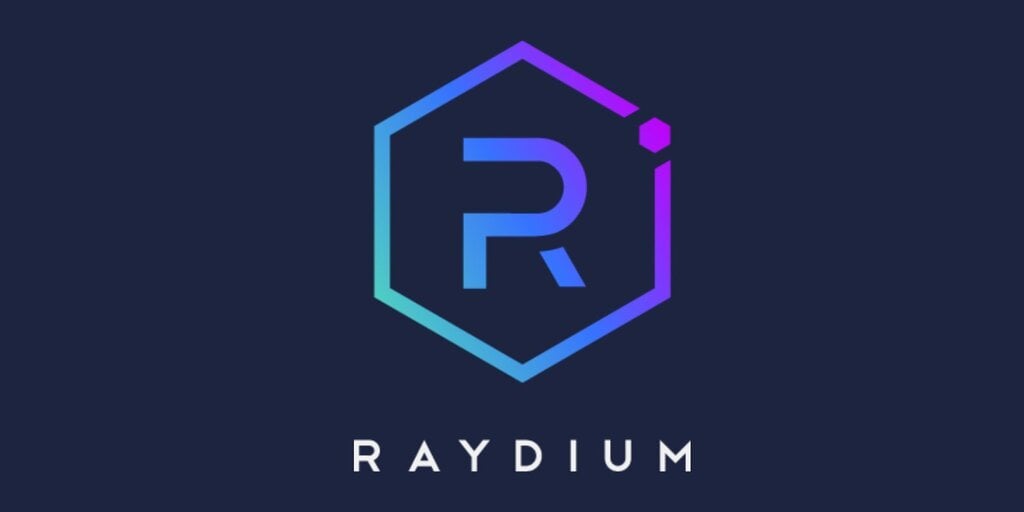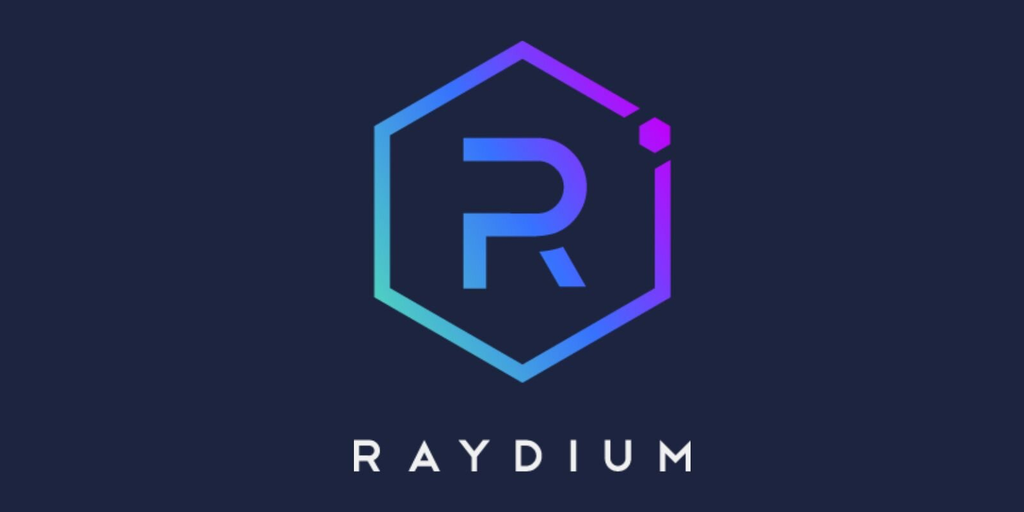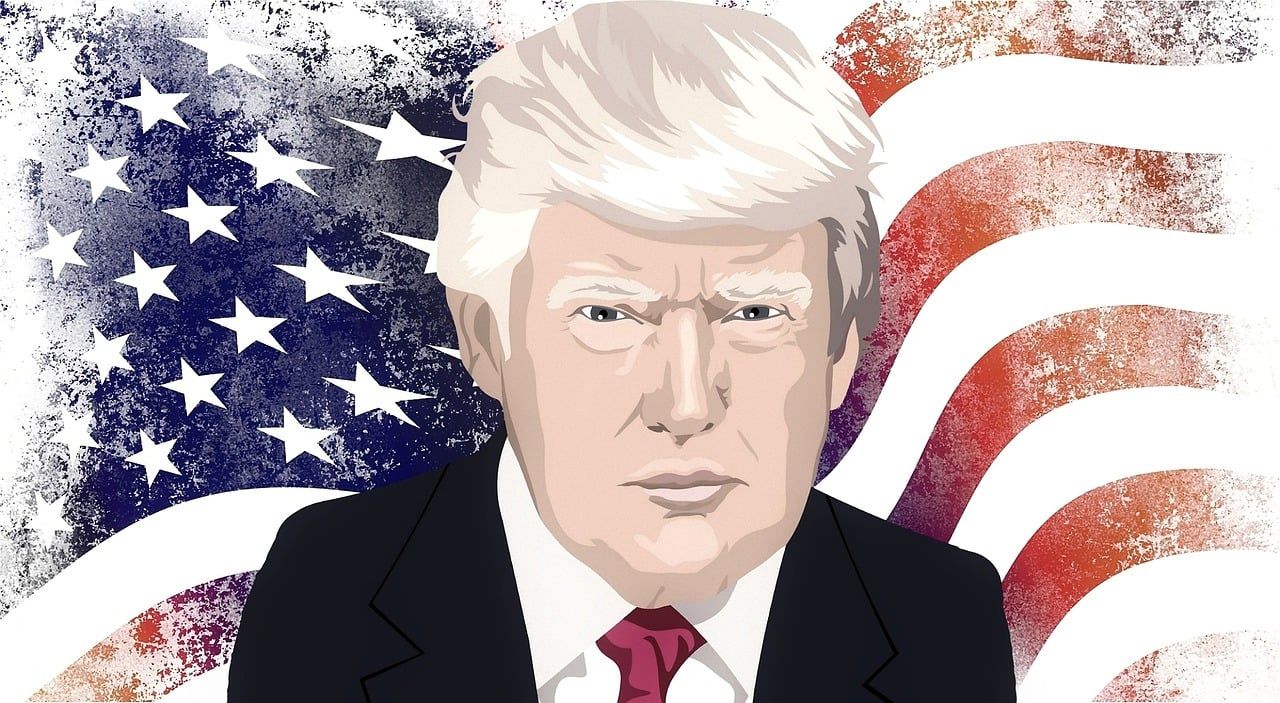DeFi
Q&A with DELV’s Charles St. Louis
Published
6 days agoon
By
admin
Memecoins, fixed-rate DeFi, and tokenization — are they the future of finance or just overhyped trends?
Charles St. Louis, CEO of Texas-based DELV, has spent over a decade shaping the DeFi landscape, specializing in fixed-rate lending, tokenized real-world assets, and governance. In this wide-ranging discussion, he unpacks the reality behind the hype, from memecoins as onboarding tools to how tokenization is transforming investment structures.
Read on for St. Louis’ take on DeFi governance, regulatory shifts, and the Trump administration’s evolving crypto stance.
Memecoin critics cite high trading risks, extreme volatility and pump-and-dump schemes. What’s your take?
Memecoins are exactly what the word suggests: memes. They have no underlying utility, revenue model, or long-term fundamentals. You’re buying into a trend, hoping it gains attention, and that’s about it. Unlike structured DeFi tokens like Maker or Morpho, which have actual revenue-generating mechanisms, memecoins are purely speculative. That being said, there is a silver lining. Memecoins bring more people into the crypto space. They act as an onboarding tool, exposing retail investors to digital assets. The hope is that once they engage with crypto through memecoins, they start exploring more substantive financial alternatives. But, that assumes their experience with memecoins doesn’t leave them jaded about the real values made available through DeFi.
Regarding fixed-rate DeFi products: Wouldn’t a lending model like that become unsustainable if the underlying assets or collateral lose value suddenly? Pretend I’m a borrower. Why shouldn’t I worry?
We’ve built two core fixed-rate products at DELV. The first is fixed-rate yield, which functions in some ways like zero-coupon bonds. Users buy crypto at a discount, and it matures to full value over time. Say, buying 0.95 ETH and watching it grow into 1 ETH. This is ideal for passive investors who want predictable returns without actively managing volatility.
The second product is fixed-rate borrowing. Hyperdrive allows us to effectively create fixed-rate versions of existing variable-rate borrowing markets, like those on Morpho or Spark. This is crucial for institutions that require stability.
As for risk, most DeFi borrowing is overcollateralized, meaning users must put up $150 to borrow $100. This makes defaults far less likely than in traditional finance, where undercollateralized loans are common. The real challenge in DeFi borrowing is digital identity and reputation, without credit scoring, there’s no way to assess borrower reliability. Until that’s solved, overcollateralization remains necessary for risk management.

Are any companies at the forefront of tokenizing real-world assets (RWAs)? It seems like there is a lot of talk but no implementation.
Tokenization is a game-changer because it removes the inefficiencies of traditional financial markets. Instead of slow, paper-based processes, assets like real estate and treasury bills (T-bills) can be tokenized and traded on-chain instantly and 24/7/365. This not only increases liquidity but also expands access to global investors. For example, manufacturers can tokenize their real estate assets and borrow against them in real time, eliminating the need for slow bank approvals. Similarly, tokenized T-bills allow anyone with an internet connection to invest in government debt without a broker. It’s about accessibility and efficiency. There’s a lot of talk about RWAs, and while we’re still in the early days, we’re seeing serious adoption. Franklin Templeton, BlackRock, and JPMorgan are moving into tokenized securities. Ondo Finance is bridging DeFi capital to RWAs, and Maple Finance is focusing on on-chain credit markets.
What’s next for DeFi governance as regulatory clarity increases?
Many teams launched DAOs too early, giving full control to token holders before proper infrastructure was in place. This led to inefficiencies, voter apathy, and governance attacks. Regulatory clarity is allowing for a more structured approach. The U.S. is beginning to recognize ‘safe harbor’ provisions (at least in spirit), meaning teams will be able to gradually transition control to DAOs instead of decentralizing overnight. This will lead to more sustainable governance models. Additionally, legal wrappers for DAOs are becoming more common, allowing them to operate as structured businesses. Right now, many DAOs can struggle to manage massive treasuries in a way that adheres to tax compliance or accountability concerns. That’s going to change as regulatory clarity improves.
Trump is certainly loosening regulations around crypto. Are there any issues you feel deserve more attention?
Trump has taken a more hands-off approach to crypto regulation while he gives time for relevant agencies to develop thoughtful approaches that constructively advance their core missions, which has been positive for innovation. His policies of reducing regulation by enforcement (such as with the U.S. Securities and Exchange Commission) and pushing for a national Bitcoin reserve have definitely brought attention to the market.
However, more attention could be — and likely will be — given to stablecoin and real-world assets and how they’re regulated. While Bitcoin’s value cannot be denied, it has also become a buzzword that overshadows stablecoins and tokenized assets, which are more likely to serve as foundational building blocks for institutions.
Source link
You may like


Crypto Whale’s Losses on TRUMP Memecoin Balloon to $15,700,000 After Exiting Three Losing Trades in a Row


FDIC Says Banks Can Engage In Bitcoin And Crypto Without Prior Approval


FDIC Clears Path for Bank Crypto Activities Without Prior Approval


Seasoned traders reveal leading crypto for 2025 and it’s not XRP or Solana


Here’s Why Peter Schiff Predicts Bitcoin (BTC) Price Crash to $10K


Chainlink Monthly Close To Determine LINK’s Fate, $19 Next?
cryptocurrency
Crypto scammers nabbed in India for $700k fraud posing as a Japanese exchange
Published
2 days agoon
March 27, 2025By
admin

Law enforcement in India has arrested five suspects who allegedly duped a businessman out of roughly $700,000 via a fake cryptocurrency trading platform.
According to local media, the five suspects, including one woman, were taken into custody following an investigation by the cybercrime wing of Odisha’s Crime Branch.
The accused reportedly ran a scam using a bogus trading app called ZAIF, where they promised massive returns of up to 200% on digital currency investments. The trading platform was promoted as being based in Japan.
It’s worth noting that ZAIF is the name of a legitimate Japanese cryptocurrency exchange, which suffered a $60 million hack in 2022. However, the platform used in this scam is likely unaffiliated and merely borrowed the name to appear credible.
The fraud kicked off when the victim, an Indian businessman, was contacted on Facebook by a woman claiming to be a Hong Kong-based IBM software developer.
She gained his trust and convinced him to invest in crypto via ZAIF. Over a month, he transferred more than INR 6 crore (approximately $$699,352) across various accounts controlled by the scammers.
As is common in such crypto trading scams, the victim was initially shown fake profits on the platform to build trust. However, when the victim attempted to withdraw gains, the platform demanded an additional INR 89 lakh to unlock the funds — a tactic commonly referred to as an advance fee fraud.
Once the victim refused, the scammers vanished, cutting off contact.
Police tracked down the suspects through digital trails and banking records. Authorities seized phones, SIM cards, ID documents, and other incriminating materials during a raid.
With cryptocurrencies still operating in a grey area, India remains a hotspot for scams and fraud targeting unsuspecting users. Earlier this month, police cracked down on a similar scam that promoted a fake token called RSN and promised 2% daily returns. Losses were estimated to be between $1.14 and $2.29 million.
Source link
DeFi
Solana DEX Raydium’s Pump.fun Alternative Is Going Live ‘Within a Week’
Published
3 days agoon
March 26, 2025By
admin

Solana decentralized exchange Raydium says it’s going live in the next week with its “flexible” token launchpad, which will address what have become user pain points on its soon-to-be competitor Pump.fun.
The new platform, LaunchLab, will allow users to adjust a token’s bonding curve and tokenomics, while still offering a user-friendly cookie cutter option.
Previously, Raydium had simply operated as an automated market maker and decentralized exchange on Solana; while Pump.fun rapidly grew to become the most popular token launchpad due to its quick and easy experience.
When tokens reached a certain market cap on Pump.fun, they used to “graduate” to Raydium. Doing so allowed for tokens to be more freely and widely traded. However, last week, Pump.fun split off from Raydium and began graduating tokens to PumpSwap, its own decentralized exchange.
Tom, the pseudonymous team lead at Raydium, told Decrypt that he had a “gut feeling” Pump.fun was going to make a move like this and had been preparing for it for “a couple of months,” by creating a rival launchpad in LaunchLab.
“The program that we have right now offers a lot of flexibility for token creators,” Tom explained. “The vast majority of asset issuance in the future is going to happen on Solana, and we want Raydium to play a central role in that.”
LaunchLab is set to offer a wide range of parameters that users can adjust for their token launch. These include the total token supply, vesting schedules, which liquidity pool to utilize, as well as various ways to manipulate the “bonding curve”—which is used to generate liquidity for a token before it launches for wider distribution.
In fact, Raydium is even toying with the idea of being able to manually drag the bonding curve on its X and Y access, in turn impacting several factors relating to the token. Tom says this would display the power of the tool the team is creating, but he is unsure if the feature will ship straight away.
This is a stark difference to Pump.fun which only allows users to make aesthetic changes to tokens, giving everything the same tokenomics and bonding curve. And, in many ways, this simplicity has been to the benefit of the platform as traders know exactly what they’re getting into when buying a Pump.fun token.
However, Raydium thinks it’s time to evolve.
“We’ve talked to hundreds of teams this year, especially on the AI token side, where they initially launched their token on Pump.fun, and then they realized they didn’t have the amount of funding that they needed to deliver on their goals,” Tom explained. “So I think that people will view the optionality of [LaunchLab] as being a net benefit, but it might take some time to play out.”
Pump.fun has seen a wave of AI projects either endorse or create a token on the launchpad as a way to fund development. However, a common pain point is the lack of control the team has over the token.
This can result in “tremendous energy” that is “difficult to sustain” due to a lack of capital, Ooli, the creator of AI With Daddy Issues, previously told Decrypt.
Tom said that despite Pump.fun’s surge in popularity, there is still “considerable friction” for projects looking to create bespoke tokens. Over the past year, the Raydium team has been troubleshooting for a number of projects that wanted to launch tokens that didn’t suit Pump.fun’s simplified approach, in part prompting the creation of a more complex launchpad to address this.
Although there is optional flexibility with LaunchLab’s token creation process, it will still aim to provide a retail and user-friendly experience. The user interface itself will “look and feel” similar to Pump.fun and provide a cookie cutter token option—if the user isn’t keen on adjusting its parameters.
“I would like to see teams benefit from the flexibility of the program, I think a couple of strong launches does a lot to really show this,” Tom told Decrypt. “I would like to see users make money and tokens increase in price in a way that is sustainable, [which will] lead to more migrations and trading throughout Solana.”
LaunchLab is set to be part of a broader suite of products by Raydium, with the first tool being the aforementioned token launchpad. Currently, the team is considering which features to go live with and which to hold back. Tom also said Raydium is talking to third parties about implementing LaunchLab into their products, as well as creating a “liquidity bootstrapping” feature somewhat akin to the pre-sale model.
“I think all products have a phase one which is: You get it out there, you throw something at the wall and you see what sticks.” he said. “And if you’re not seeing a lot of stuff stick, you pick it back up, you re-bundle it, and you throw it again.”
Tom told Decrypt that he’s ready to push LaunchLab as early as Wednesday, but is holding back to think through how the product can make the biggest splash. Adding that it will definitely be shipped “within the next week.”
“But I can say that fees will be less and the idea is to have [LaunchLab] be positive long-term for the space,” he added.
Edited by Stacy Elliott.
Daily Debrief Newsletter
Start every day with the top news stories right now, plus original features, a podcast, videos and more.
Source link
DeFi
World Liberty Financial-Labeled Tokens Spark Speculation of Trump-Backed Project’s Stablecoin Launch
Published
5 days agoon
March 24, 2025By
admin
Crypto observers were speculating on Monday that World Liberty Financial (WLFI), the decentralized finance (DeFi) platform backed by U.S. President Donald Trump and his family, might be testing its long-awaited dollar stablecoin before rolling out for the broader public.
Blockchain sleuths earlier today noted a flurry of activity with a token labeled as World Liberty Financial USD (USD1) on blockchain monitoring websites Etherscan and BscScan. Blockchain data shows that USD1 was deployed earlier this month on the Ethereum and BNB Chain networks and series of transactions with the token occurring over the past couple weeks.
Some transfers included addresses linked to Wintermute, a large digital asset trading firm and market maker, and crypto custodian BitGo, according to Arkham Intelligence data. The token’s supply currently stood at around 3.5 million-3.5 million on Ethereum and BNB Chain, per Etherscan and BscScan.

Changpeng CZ Zhao, founder of crypto exchange giant Binance, brought widespread attention to the token by “welcoming” the project on BNB Chain in a post with a screenshot of the USD1 BscScan profile shared with his 10 million followers. The post, he later said, triggered a wave of copy-cats aiming to capitalize on the new-found attention.
WLFI, reacting in a X post, said USD1 is not currently available for trading and crypto users should beware of scams.
Stablecoin buzz
WLFI, a project spearheaded by Zachary Folkman and Chase Herro, made a splash last year as one of the first crypto projects enjoying the backing of Trump. The protocol aims to provide a blockchain-based marketplace where users can borrow and lend cryptocurrencies, create liquidity pools and transact with stablecoins.
It’s been widely known that the project is working on crafting its own stablecoin, but there hasn’t been any official communication about exact plans and timing of launching the token publicly. CoinDesk has reached out to the team, but hasn’t received any replies.
Stablecoins are one of the fastest-growing corners of the crypto industry and widely regarded as the killer use case for blockchains. With their prices pegged to an external asset, predominantly to the U.S. dollar, they are widely used as a crypto trading pair and transactions on blockchain rails. They are also increasingly used for everyday payments, remittances and savings, attracting the attention of many venture capital investors.
Buzz around the asset class rejuvenated over the past months as the Trump administration elevated stablecoin regulation to the top of its crypto agenda. Treasury Secretary Scott Bessent said that stablecoins have a key role in preserving the U.S. dollar’s global role as a reserve currency.
Source link

Crypto Whale’s Losses on TRUMP Memecoin Balloon to $15,700,000 After Exiting Three Losing Trades in a Row

FDIC Says Banks Can Engage In Bitcoin And Crypto Without Prior Approval

FDIC Clears Path for Bank Crypto Activities Without Prior Approval

Seasoned traders reveal leading crypto for 2025 and it’s not XRP or Solana
President Trump Pardons Arthur Hayes, 3 Other BitMEX Co-Founders and Employee

Here’s Why Peter Schiff Predicts Bitcoin (BTC) Price Crash to $10K

Chainlink Monthly Close To Determine LINK’s Fate, $19 Next?

Elon Musk’s sale of X to xAI just made fraud lawsuit a ‘lot spicer’

494,000 Americans Affected As Massive Data Breach Exposes Names, Financial Records, Medical Data, Social Security Numbers and More: Report

Proposed South Carolina Bill Lets State Treasurer Invest 10% Of State Funds In Bitcoin

Elon Musk Folds X Into xAI, Creating a $113 Billion Juggernaut

Why Trump’s ‘Liberation Day’ tariffs may hurt crypto’s global future
Bitcoin Plunges Below $84K as Crypto Sell-Off Wipes Out Weekly Gains

Top 4 Crypto to Buy Now as XRP Price Struggles above $2
Ethereum Price Hits 300-Week MA For The Second Time Ever, Here’s What Happened In 2022

Arthur Hayes, Murad’s Prediction For Meme Coins, AI & DeFi Coins For 2025

Expert Sees Bitcoin Dipping To $50K While Bullish Signs Persist

Aptos Leverages Chainlink To Enhance Scalability and Data Access

Bitcoin Could Rally to $80,000 on the Eve of US Elections

Sonic Now ‘Golden Standard’ of Layer-2s After Scaling Transactions to 16,000+ per Second, Says Andre Cronje

Institutional Investors Go All In on Crypto as 57% Plan to Boost Allocations as Bull Run Heats Up, Sygnum Survey Reveals

Crypto’s Big Trump Gamble Is Risky

Ripple-SEC Case Ends, But These 3 Rivals Could Jump 500x

Has The Bitcoin Price Already Peaked?

A16z-backed Espresso announces mainnet launch of core product

Xmas Altcoin Rally Insights by BNM Agent I

Blockchain groups challenge new broker reporting rule

The Future of Bitcoin: Scaling, Institutional Adoption, and Strategic Reserves with Rich Rines

Trump’s Coin Is About As Revolutionary As OneCoin

Is $200,000 a Realistic Bitcoin Price Target for This Cycle?
Trending

 24/7 Cryptocurrency News5 months ago
24/7 Cryptocurrency News5 months agoArthur Hayes, Murad’s Prediction For Meme Coins, AI & DeFi Coins For 2025

 Bitcoin2 months ago
Bitcoin2 months agoExpert Sees Bitcoin Dipping To $50K While Bullish Signs Persist

 24/7 Cryptocurrency News3 months ago
24/7 Cryptocurrency News3 months agoAptos Leverages Chainlink To Enhance Scalability and Data Access

 Bitcoin5 months ago
Bitcoin5 months agoBitcoin Could Rally to $80,000 on the Eve of US Elections

 Altcoins2 months ago
Altcoins2 months agoSonic Now ‘Golden Standard’ of Layer-2s After Scaling Transactions to 16,000+ per Second, Says Andre Cronje

 Bitcoin5 months ago
Bitcoin5 months agoInstitutional Investors Go All In on Crypto as 57% Plan to Boost Allocations as Bull Run Heats Up, Sygnum Survey Reveals

 Opinion5 months ago
Opinion5 months agoCrypto’s Big Trump Gamble Is Risky

 Price analysis5 months ago
Price analysis5 months agoRipple-SEC Case Ends, But These 3 Rivals Could Jump 500x


